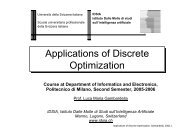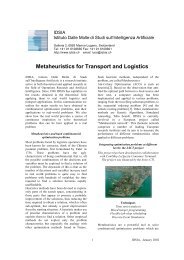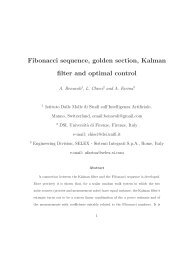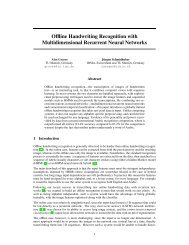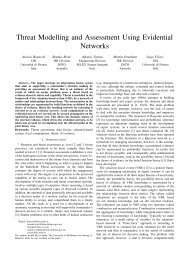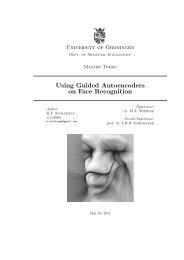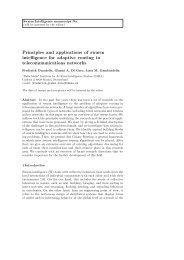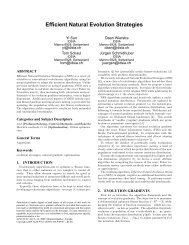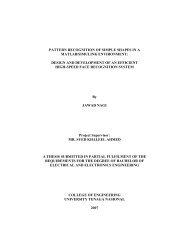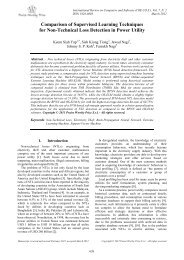Support Vector Machines - The Auton Lab
Support Vector Machines - The Auton Lab
Support Vector Machines - The Auton Lab
Create successful ePaper yourself
Turn your PDF publications into a flip-book with our unique Google optimized e-Paper software.
Computing the margin width<br />
“Predict Class = +1”<br />
zone<br />
wx+b=1<br />
wx+b=0<br />
wx+b=-1<br />
“Predict Class = -1”<br />
zone<br />
M = Margin Width<br />
How do we compute<br />
M in terms of w<br />
and b?<br />
• Plus-plane = { x : w . x + b = +1 }<br />
• Minus-plane = { x : w . x + b = -1 }<br />
Claim: <strong>The</strong> vector w is perpendicular to the Plus Plane. Why?<br />
Copyright © 2001, 2003, Andrew W. Moore <strong>Support</strong> <strong>Vector</strong> <strong>Machines</strong>: Slide 13<br />
Computing the margin width<br />
“Predict Class = +1”<br />
zone<br />
wx+b=1<br />
wx+b=0<br />
wx+b=-1<br />
“Predict Class = -1”<br />
zone<br />
• Plus-plane = { x : w . x + b = +1 }<br />
• Minus-plane = { x : w . x + b = -1 }<br />
Claim: <strong>The</strong> vector w is perpendicular to the Plus Plane. Why?<br />
And so of course the vector w is also<br />
perpendicular to the Minus Plane<br />
M = Margin Width<br />
How do we compute<br />
M in terms of w<br />
and b?<br />
Let u and v be two vectors on the<br />
Plus Plane. What is w . ( u – v ) ?<br />
Copyright © 2001, 2003, Andrew W. Moore <strong>Support</strong> <strong>Vector</strong> <strong>Machines</strong>: Slide 14<br />
7



